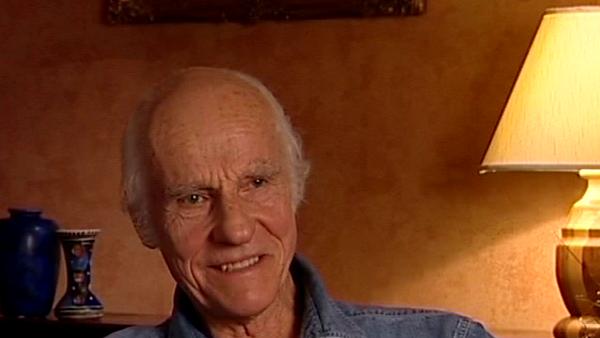NEXT STORY

Using Space lights
RELATED STORIES

NEXT STORY

Using Space lights
RELATED STORIES


|
Views | Duration | |
|---|---|---|---|
| 31. Working on the ice for Billion Dollar Brain | 94 | 02:13 | |
| 32. Shooting Billion Dollar Brain at Pinewood with Ken... | 127 | 04:59 | |
| 33. Developing my use of soft light | 122 | 02:13 | |
| 34. Using Space lights | 139 | 01:23 | |
| 35. Finding a way around soft lighting problems | 154 | 04:41 | |
| 36. The camera and equipment on Billion Dollar Brain | 104 | 05:13 | |
| 37. Story boards versus rehearsals | 93 | 03:53 | |
| 38. Confidence and communication on a film set | 156 | 03:29 | |
| 39. Communicating a scene effectively through the lighting | 2 | 82 | 03:40 |
| 40. My daughter made Anthony Quinn cry | 124 | 03:32 |


So I'd begun to get into using softer light. So in the studio I asked for big ceiling pieces to put...be put in above the spot rail. I still use the spot rail but I had a ceiling piece above the rail into which I could bounce a couple of 10Ks, which gave me like a soft fill, top... top light, which kind of filled in some of the dark areas, because you had to fill in a little bit more in those days, the stock we had then, you had to give it a little bit more filler, and you know, it was nice to get something into the shadows. And I was still using... for the... in the studio I was still using mainly a hard soft light and trying to fill in with softer light for fill in, so the key light might be hard and the soft light filler... the fill light soft. And we used pieces of flat, painted white, to bounce light off to fill in with, but because it was a bit cumbersome and over the years, of course, getting fill light in has become so much easier with... with the development of polystyrene, which gives a lovely white surface and it's so lightweight and easy to fix, it’s... over the years it became much easier to get a soft fill light in without going to a great deal of rigging, because rigging time is... is lost time. When I think back to how long it took to light a set in those days. It was partly... you're mainly waiting for things to be put in position, because the equipment was so heavy and the cable was so heavy that you were very often just saying, well I'd like... I want a lamp there and then you wait five or 10 minutes until it gets there. Nowadays equipment is so much lighter that you can get things into place a lot easier. And of course... Of course the advantage of pre-rigging is terribly important too, to have a set pre-rigged so that things are all in position.
Billy Williams, London-born cinematographer Billy Williams gained his first two Oscar nominations for the acclaimed “Women in Love” and “On Golden Pond”. His third nomination, which was successful, was for the epic “Gandhi”. He was President of the British Society of Cinematographers, and was awarded the Camera Image Festival’s Lifetime Achievement Award in 2000.
Title: Developing my use of soft light
Listeners: Neil Binney
Neil Binney began working as a 'clapper boy' in 1946 on spin-off films from steam radio such as "Dick Barton". Between 1948-1950 he served as a Royal Air Force photographer. From 1950 he was a Technicolor assistant technician working on films such as John Ford's "Mogambo" (photographed by Freddie Young), Hitchcock's "The Man Who Knew Too Much" (Bob Burke), and Visconti's "Senso" (G.R. Aldo/B. Cracker). As a camera assistant he worked on "Mind Benders", "Billy Liar" and "This Sporting Life". Niel Binney became a camera operator in 1963 and worked with, among others, Jack Cardiff, Fred Tammes and Billy Williams. He was elected associate member of the British Society of Cinematographers in 1981 and his most recent credits include "A Fish Called Wanda" and "Fierce Creatures".
Duration: 2 minutes, 14 seconds
Date story recorded: September 2003
Date story went live: 24 January 2008
Monday, 19 December 2011 05:15 PM
Absolutely invaluable material! I am working on a film studies/discourse analysis doctorate and the...
More...